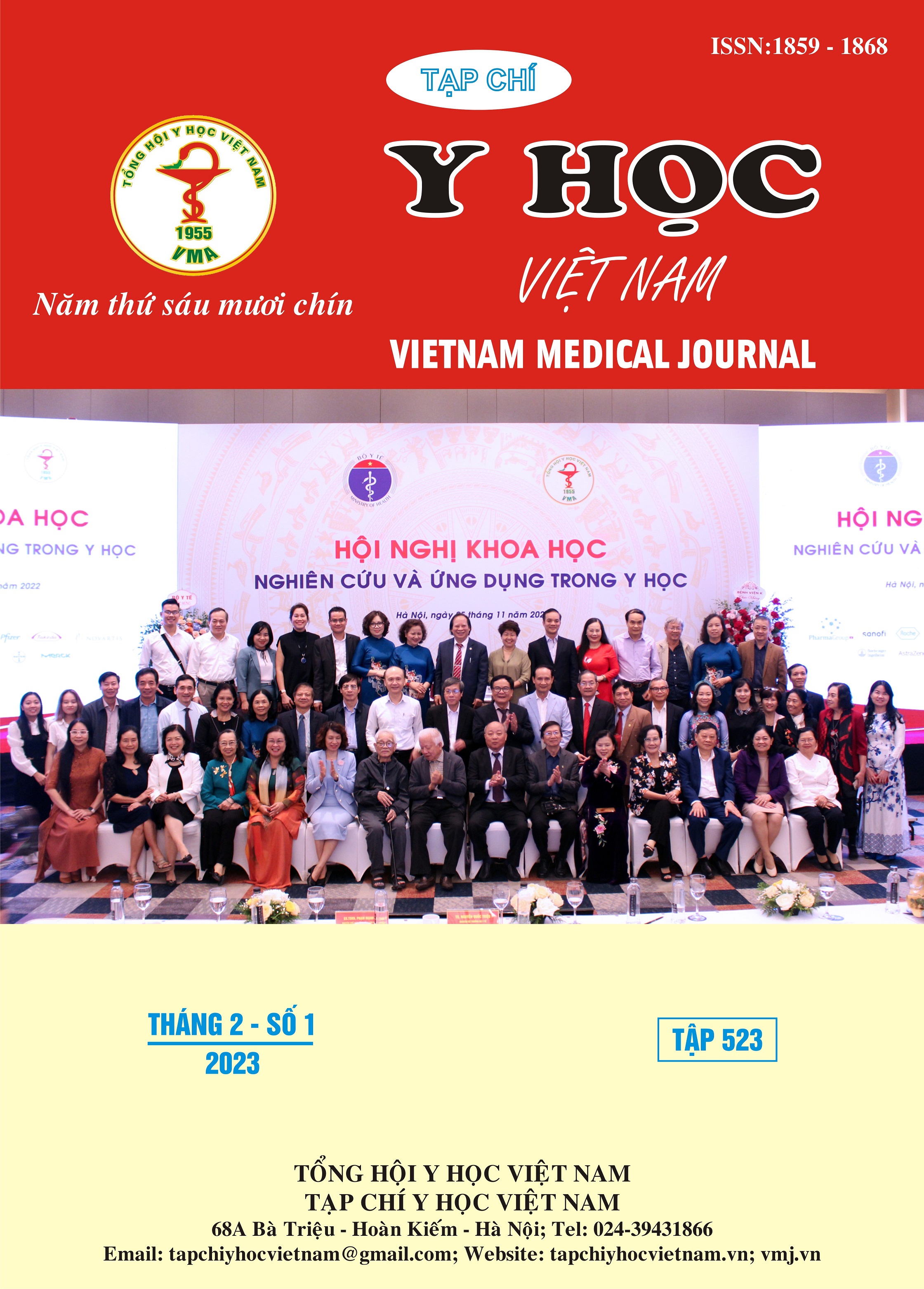ASSESSMENT OF THE RESULTS OF CLOSED REDUCTION METHOD IN TREATMENT OF ZYGOMATICOMAXILLARY COMPLEX FRACTURE
Main Article Content
Abstract
Background: Determining the role and effectiveness of the method of lifting the cheekbone through the maxillary sinus, the surgical method is less traumatic compared to other methods and still gives positive treatment results in fracture cases. cheekbones. Objective: To evaluate the treatment results of patients with zygomatic fractures by closed reduction method in treatment of zygomaticomaxillary complex fracture. Materials and methods: All 49 patients with zygomatic fractures were examined and treated with closed reduction method in treatment of zygomaticomaxillary complex fracture at Hau Giang Provincial General Hospital from February 2019 to June 2020. Descriptive cross-sectional study with analysis and clinical intervention without control group. Results: Postoperative results: 100% of patients after suturing soft tissue covering the wound, 4.1% had signs of infection, 4.1% had postoperative bleeding, 98.0% had wound condition. Surgery was normal, 93.9% had normal cheekbones, 100% of patients had normal eyeballs and 8.2% had sensory disturbances. Results of treatment before hospital discharge: After treatment, there were 98.0% patients with significant swelling reduction, 93.9% normal cheekbones, 98.0% normal eyeball and 6.1% disorder. feeling. After 1 week of discharge, 100.0% of patients had significant swelling reduction, 93.9% of patients had normal cheekbones, 100.0% of normal eyeballs and 4.1% had sensory disturbances. After 3 months of discharge, 95.9% of patients with normal cheekbones, 100.0% of patients with normal eyeball condition, 100% of patients with good mouth opening, no longer had sensory disturbances and 12, 2% of patients with recurrent sinusitis. Conclusion: Closed reduction method is a minimally traumatic surgical method with good results.
Article Details
Keywords
zygomaticomaxillary complex, closed reduction method
References
2. Vũ Thị Bắc Hải (2004), "Nghiên cứu đặc điểm lâm sàng và kết quả điều trị gãy xương gò má cung tiếp tại bệnh viện Trung ương Huế", Tạp chí khoa học, Số 24/2004, tr. 73-95.
3. Đặng Xuân Lộc (2015), Nghiên cứu đặc điểm lâm sàng, cận lâm sàng và kết quả điều trị gãy xương gò má cung tiếp tại bệnh viện Quân Y 121, Bệnh viện Quân Y 121.
4. Nguyễn Đức Tuấn (2017), Đánh giá kết quả điều trị phẫu thuật gãy xương gò má có phối hợp tổn thương xoang hàm do chấn thương, Luận án chuyên khoa cấp II, Trường Đại học Y Dược - Đại học Huế.
5. Assiri ZA, Salma REG, Almajid EA, Alfadhel AK. Retrospective radiological evaluation to study the prevalence and pattern of maxillofacial fracture among Military personal at Prince Sultan Military Medical City [PSMMC], Riyadh: An institutional study. Saudi Dent J. 2020 Jul; 32(5):242-249
6. Cohn JE, Othman S, Bosco S, et al. Management of Isolated Zygomatic Arch Fractures and a Review of External Fixation Techniques. Craniomaxillofacial Trauma & Reconstruction. 2020;13(1):38-44.
7. Luciana L, Oggy BAR, Wiargitha IK, Irawan H. Management of Maxillofacial Fracture: Experience of Emergency and Trauma Acute Care Surgery Department of Sanglah General Hospital Denpasar Bali. Open Access Maced J Med Sci. 2019 Oct 8;7(19):3245-3248
8. Starch-Jensen T, Linnebjerg LB, Jensen JD. Treatment of Zygomatic Complex Fractures with Surgical or Nonsurgical Intervention: A Retrospective Study. Open Dent J. 2018 May 21;12:377-387.


